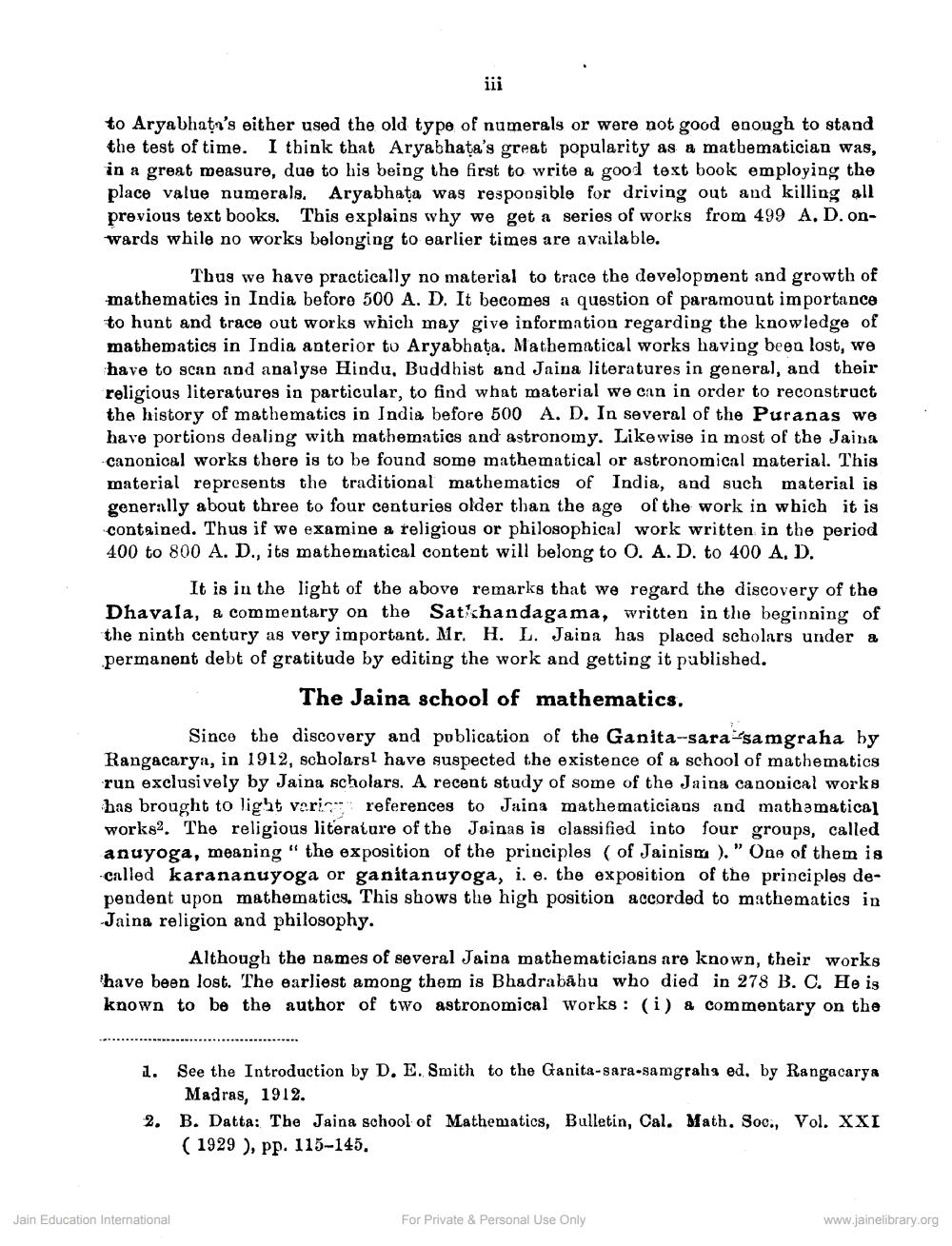________________
iii
to Aryabhata's either used the old type of numerals or were not good enough to stand the test of time. I think that Aryabhata's great popularity as a mathematician was, in a great measure, due to his being the first to write a good text book employing the place value numerals. Aryabhata was responsible for driving out and killing all previous text books. This explains why we get a series of works from 499 A. D. onwards while no works belonging to earlier times are available.
Thus we have practically no material to trace the development and growth of mathematies in India before 500 A. D. It becomes a question of paramount importance to hunt and trace out works which may give information regarding the knowledge of mathematics in India anterior to Aryabhata. Mathematical works having been lost, we have to scan and analyse Hindu, Buddhist and Jaina literatures in general, and their religious literatures in particular, to find what material we can in order to reconstruct the history of mathematics in India before 500 A. D. In several of the Puranas we have portions dealing with mathematics and astronomy. Likewise in most of the Jains canonical works there is to be found some mathematical or astronomical material. This material represents the traditional mathematics of India, and such material is generally about three to four centuries older than the age of the work in which it is contained. Thus if we examine a religious or philosophical work written in the period 400 to 800 A. D., its mathematical content will belong to O. A. D. to 400 A. D.
It is in the light of the above remarks that we regard the discovery of the Dhavala, a commentary on the Satchandagama, written in the beginning of the ninth century as very important. Mr. H. L. Jaina has placed scholars under a permanent debt of gratitude by editing the work and getting it published.
The Jaina school of mathematics.
Since the discovery and publication of the Ganita-sara samgraha by Rangacarya, in 1912, scholars have suspected the existence of a school of mathematics run exclusively by Jaina scholars. A recent study of some of the Jaina canonical works has brought to light vering references to Jains mathematicians and mathematical works. The religious literature of the Jainas is classified into four groups, called anuyoga, meaning " the exposition of the principles (of Jainism )." One of them is called karananuyoga or ganitanuyoga, i. e. the exposition of the principles dependent upon mathematics. This shows the high position accorded to mathematics in Jaina religion and philosophy.
Although the names of several Jaina mathematicians are known, their works have been lost. The earliest among them is Bhadrabahu who died in 278 B. C. He is known to be the author of two astronomical works: (i) a commentary on the
Jain Education International
See the Introduction by D. E. Smith to the Ganita-sara-samgrahs ed. by Rangacarya Madras, 1912.
2. B. Datta: The Jaina school of Mathematics, Bulletin, Cal. Math. Soc., Vol. XXI (1929), pp. 115-145.
For Private & Personal Use Only
www.jainelibrary.org




